-
Posts
6,779 -
Joined
-
Last visited
-
Days Won
339
Content Type
Forums
Gallery
Events
Shop
News
Audio Archive
Timeline
Posts posted by Alan Edgar (Eggy1948)
-
-
3 hours ago, Monsta® said:
No it's just vacant been like for years turned into a flat that no one wants
4 hours ago, moe19 said:Your right webtrekker
Also when it was Barclays it was not on palace road it was somewhere between Matty Robinsons and Keenleysides I think now pulled down
I think the bank in your photo on palace road is possibly now somthing like hot mlillions or the likes ( I think they are the single storey buildings between the Clayton and the old domino
I know these are Google street view 2009 images but the building that was Barclays building on Station street is still standing, and as Monstat says it's now a flat but I don't know if it is in use or still on the market, what was Martins on Palace Road still shows as Hot Millions on Google 2009
-
5 hours ago, Canny lass said:
My mother always baked biscuits called Anzacs but she always made them for Easter. I understood they were something to do with the Australian army but don't know what.
Extracts from Wikipedia pages :-
An Anzac biscuit is a sweet biscuit, popular in Australia and New Zealand, made using rolled oats, flour, sugar, butter, golden syrup, baking soda, boiling water and optionally desiccated coconut. Anzac biscuits have long been associated with the Australian and New Zealand Army Corps (ANZAC) established in World War I.
It has been claimed the biscuits were sent by wives to soldiers abroad because the ingredients do not spoil easily and the biscuits kept well during naval transportation. Today, Anzac biscuits are manufactured commercially for retail sale.
--------------------------------------------------------------------------------
Today, Anzac biscuits are manufactured commercially for retail sale. Because of their military connection with the ANZACs and ANZAC Day, these biscuits are often used as a fundraising item for the Royal New Zealand Returned Services' Association (RSA) and the Returned and Services League of Australia (RSL). A British (though still Australian-produced) version of the Anzac biscuit, supporting the Royal British Legion, is available in several major supermarket chains in the UK
-------------------------------------------------------------------------------
Recipe
ANZAC Biscuits -
Ingredients
85g porridge oat
85g desiccated coconut
100g plain flour
100g caster sugar
100g butter, , plus extra butter for greasing
1 tbsp golden syrup
1 tsp bicarbonate of soda
Notably, Anzac biscuit recipes omit eggs because of the scarcity of eggs during the war (after most poultry farmers joined the war effort) and so that the biscuits would not spoil when shipped long distances.
Method
Heat oven to 180C/fan 160C/gas 4. Put the oats, coconut, flour and sugar in a bowl. Melt the butter in a small pan and stir in the golden syrup. Add the bicarbonate of soda to 2 tbsp boiling water, then stir into the golden syrup and butter mixture.
Make a well in the middle of the dry ingredients and pour in the butter and golden syrup mixture. Stir gently to incorporate the dry ingredients.
Put dessertspoonfuls of the mixture on to buttered baking sheets, about 2.5cm/1in apart to allow room for spreading. Bake in batches for 8-10 mins until golden. Transfer to a wire rack to cool.
-
 2
2
-
-
-
5 hours ago, Monsta® said:
Would you explain the significance of associating this link to ' Dad cuts down a giant weeping willow tree - YouTube' with my comment?
I have nothing against anyone cutting down a weeping willow tree.
-
10 hours ago, Monsta® said:
Omg bedlington gets some much needed investment and a bunch of whiney folks cry on about a tree.
If you bothered to find out the facts about the people that were campaigning to save the tree you would learn that they are not a bunch of 'whiney' (your word and spelling) people.
The majority of them know it could be a lost cause but rather than just sit and 'whiney' (your word) on they have made the effort to try and do something they feel strongly about.
The majority are aware that it is only after the plans for the demolition of the Day Center and the building of the Lidl supermarket were passed that people became aware the tree was to be felled but by making the effort they have a slight chance of persuading Lidl to change their building plans.
The vast majority of them want the Lidl supermarket and the jobs it brings to the town.
If you bothered to do some research you should be able to formulate a constructive opinion, for or against, what some people are trying to do.
-
2 hours ago, mercuryg said:
Monsta, if Lidl will plant another to replace it, why not keep the existing one? That would be a much bigger PR coup for them.
mercuryg - the campaigners are waiting for a response from the email that was sent to Lidl on the subject of this tree.
Some extracts from the Bygone Bedlington postings :-
********************************************************************
............. Ian Lavery (MP) is going to discus this with the council.
Dean Jackson, (Town Champion) is putting it onto the agenda of the next steering group meeting.
........and I have had an answer back from Lidl . It only say's it will be passed onto the relevant department but at least we haven't been ignored.
This really should have all been done before planning permission was given but while it still stands there is still a little hope.
At least two people did put objections into the council before planning permission was given.
At least important people are talking about it.
******************************************************************
Cllr Wallace has emailed, and received a reply from the NCC Planning Office
Although there is another Weeping Willow tree outside the Library they are still fighting to save the one on the Lidl site.
-
My prediction is we still go down with Villa & Norwich. Can't see us getting more than 35 points.
Would prefer us to stay up but as I think we won't then would prefer Norwich to stay so we can still have two derby matches next season.
SFC better goal difference than us so :-
NUFC SFC Norwich
23-24/4/16 Liverpool v NUFC SFC v Arsenal -
30/04/2016 NUFC v C. Palace Stoke v SFC Arsenal v Norwich
07/05/2016 A. Villa v NUFC SFC v Chelsea Norwich v Man U
11/05/2015 SFC v Everton Norwich v Watford
15/05/2016 NUFC v Spurs Watford v SFC Everton v Norwich
Current Points 29 30 31
My guess
after last game = 35 35 34
SFC have better goal difference so they stay up.

-
-
19 minutes ago, HIGH PIT WILMA said:
Only for correctness,Eggy,but I take the phrase .."First Intake" as being the very first to start Westridge School,and,as already covered in another thread,this was in August 1956 ...not 1958!
My apologies if I have ignorantly mis-interpreted the phrase!
I would be really chuffed if you could find any class photo's of the Upper Remove from the years 1957-8-9..[1959 being the year that I left school..].
No HPW, tha'ts the phrase Joan Muckian (No 22 in the photo used when she posted the photo on the Bygone Bedlington site.
So when I post this photo into the Gallery Album should I be saying 'First Intake 1956' for this photo or can you confirm that this is 1958 and therefore not part of the first intake?
Photo updated with some more names :-
This is th
-
Don't gamble Maggie but if I did my money would be on - Aston Villa - NUFC & Norwich to go down.
-
17 hours ago, Eggy1948 said:
........................
Since the members on the Bygone Bedlington Facebook site learned of the proposals for the Lidl supermarket that involved the uprooting of the weeping willow (with an offer to provide cuttings from the tree that any individuals or organisations, schools etc,) they started an online petition
to try and saved the tree and if you pass the tree now you should see some Yellow Ribbons tied to the tree and the story has been picked up by the Evening Chronicle but don't know what the result will be. The organiser of the online petition is in talks with the chronicle and they are arranging for a reporter to come and meet a number of those that have signed the petition. That MIGHT be happening next Tuesday, but don't know for sure.
...........................
Posted today on Bygone Bedlington by Nickaila Adele Arnold that raised the online petition :-
'Press photo meeting will be tomorrow (Tuesday) at 4pm. Meet at the Willow Tree. See you all then ☺ xxx'
-
6 hours ago, moe19 said:
Dont forget planning applications and petitions and old day centre photos.
Pot and kettle come to mind.
And as a local I am more than happy with Morrisons, it would be very sad to see so many jobs go if it is forced to close
Not sure what you mean moe19 - I added a link to the planning and I posted photos.
-
Here we go again Brian, started with the Ols School but now ARCH - LIDL & Weeping Willow!
Moe19 - I would expect most locals would welcome any supermarket in the town, away from the conservation area. Local weekly food shopping to compete with Blyth; Ashington; Morpeth etc. etc. and the possibility of jobs, albeit probably part-time, for locals.
If I still lived in Bedlington I would have no objection to the one Weeping Willow tree been removed for the sake of employment in the town. All planning etc (no idea what the correct terminology is, never been involved with this before) is complete :-
Planning » Application Summary
15/03266/FUL | Proposed demolition of the existing adult day care centre (Class D1) and erection of a Lidl foodstore (Class A1) with associated works. | Northumberland County Council Bedlington Day Centre Bedlington Northumberland NE22 5UQ
Details - Comments (14) - Constraints (14) - Documents (62) - Related Cases (2)
Reference15/03266/FUL - Application ReceivedThu 01 Oct 2015 - Application ValidatedThu 01 Oct 2015
Northumberland County Council Bedlington Day Centre Bedlington Northumberland NE22 5UQ
Proposed demolition of the existing adult day care centre (Class D1) and erection of a Lidl foodstore (Class A1) with associated works.
StatusDecided - DecisionApplication Permitted - Decision Issued DateThu 07 Jan 2016 - Appeal StatusUnknown
This is the link to the planning application where you can download all the documents for reading with Adobe system :-
Since the members on the Bygone Bedlington Facebook site learned of the proposals for the Lidl supermarket that involved the uprooting of the weeping willow (with an offer to provide cuttings from the tree that any individuals or organisations, schools etc,) they started an online petition
to try and saved the tree and if you pass the tree now you should see some Yellow Ribbons tied to the tree and the story has been picked up by the Evening Chronicle but don't know what the result will be. The organiser of the online petition is in talks with the chronicle and they are arranging for a reporter to come and meet a number of those that have signed the petition. That MIGHT be happening next Tuesday, but don't know for sure.
Don't know a way of posting images within the written content of a posting so all the relevant images to follow :-
Could probably say a lot more but no time - bottle of Wychwood King Goblin and TV drama awaits me.
-
-
Make a pot of tea and relax and listen for 55mins
-
 1
1
-
-
-
Well said Malcolm - tell Fred I'm singing and dancing in the rain - doo bee do do doo be doo be do do...................
Sorry Brian - I'll get back to grating gears tomorrow!
-
On 4/10/2016 at 17:03, John Fox (foxy) said:
It's me thats made the original mistake,
 Jimmy is number 20
Jimmy is number 20
Photo updated Foxy and reposted on Bygone Bedlington to see if Joan Muckian has remembered any more.
-
13 hours ago, John Fox (foxy) said:
You've got the two pics and names mixed Alan, too many beers?........ second thoughts, I'm not sure whats right and whats wrong but if you bump into Number 29 Jimmy Bradley you could get into trouble!!

Oops - should have noticed that wasn't a Jimmy! I copied it from your previous post - what should it be for Jimmy Bradley - 9 or 19 or something else?
-
-
-
Next problem - looks like I waterlogged the system whilst singing and dancing in the rain!
Now I don't have the option to add comments against the photos I have just posted in the album - 'Westridge School - End of term class photos'
threegee -- can you see anything in the system that is preventing the option - 'Add a comment.....' to be displayed when I access a photo this album?
Other albums I have created - eg. Barrington Conty Primary School - do give me the option to add additional comments to individual photos.
This is the display I get within the Westridge.................. album :-
-
I agree.
-
40 minutes ago, Eggy1948 said:
Symptoms - I'm hoping your seeing less of the posting than I am. On the majority of the photos I have added to this album I have added a title and a comment saying on what social media site it was originally posted and who posted it. There are some, eg westridge 3 - 1965, I had a problem when posting - Error 200 I think - and I could not complete the final stage of adding a comment. Even though I did not complete all stages the system had saved the photos. After the images are saved on the system, Error 200 or all 4 stages fully completed, I don't have the permissions to edit individual entries, or add further comments, in an album.
What I said before is not strictly true - I do have permissions to add comments on previously created albums, eg 'Netherton/Nedderton old photos 2' but in the new album 'Westridge School - End of term class photos' I don't.


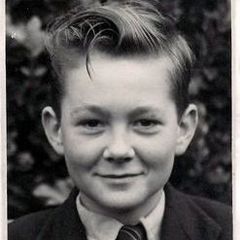
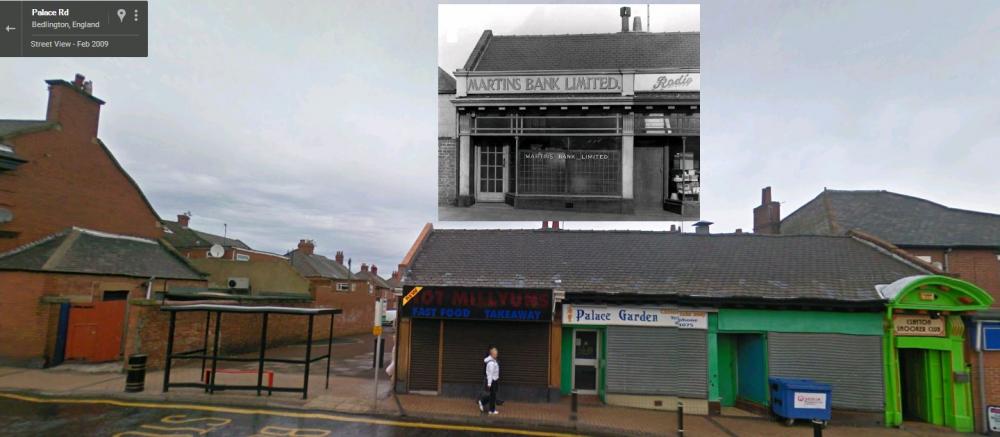

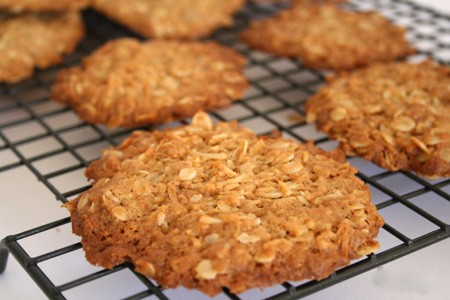
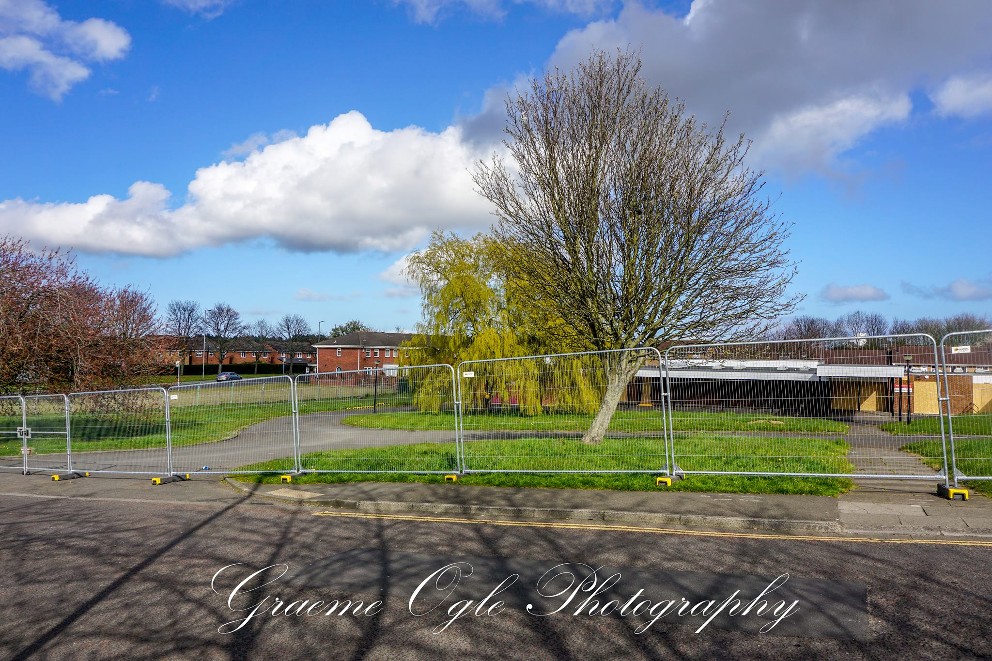

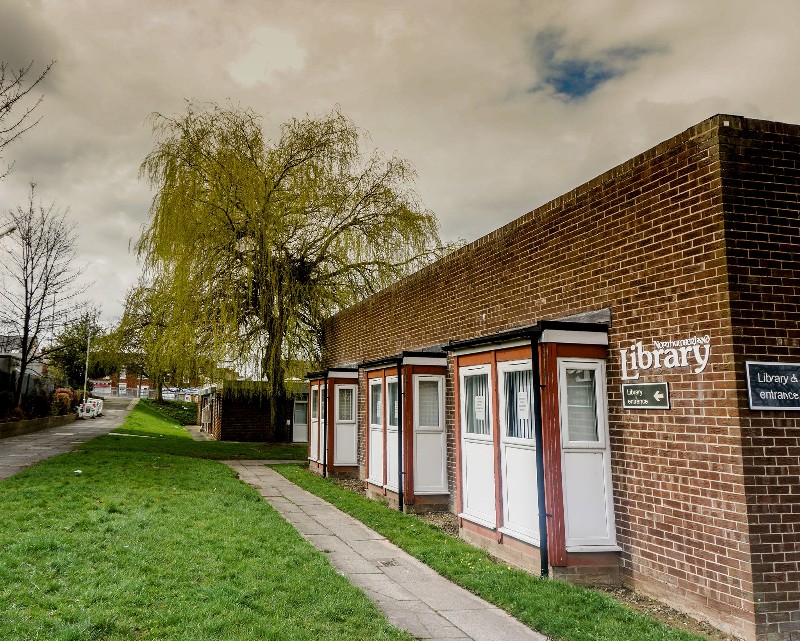


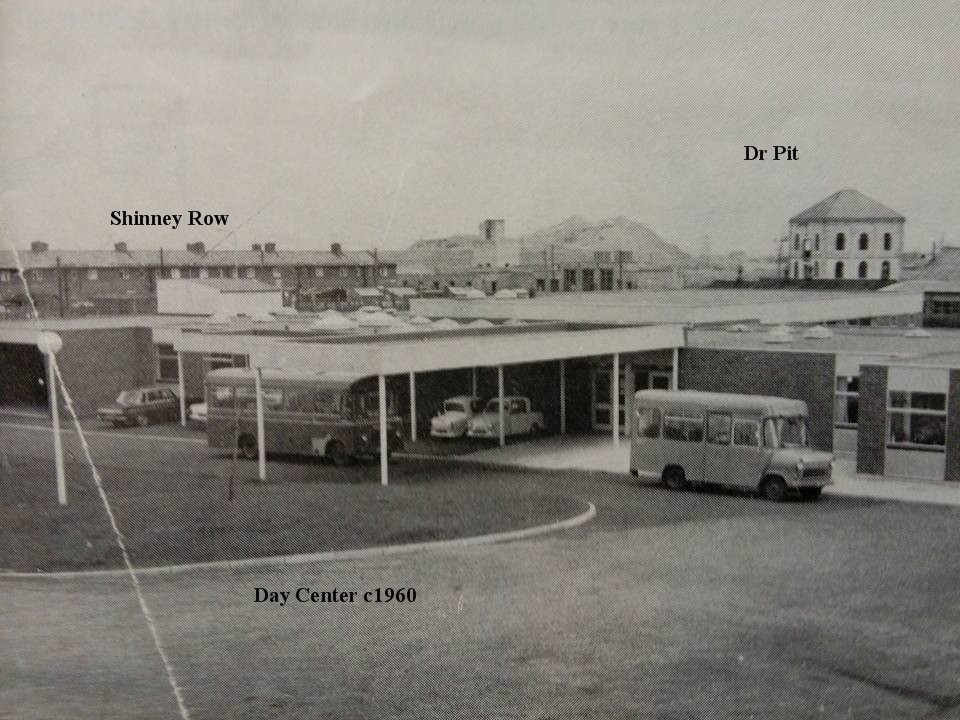
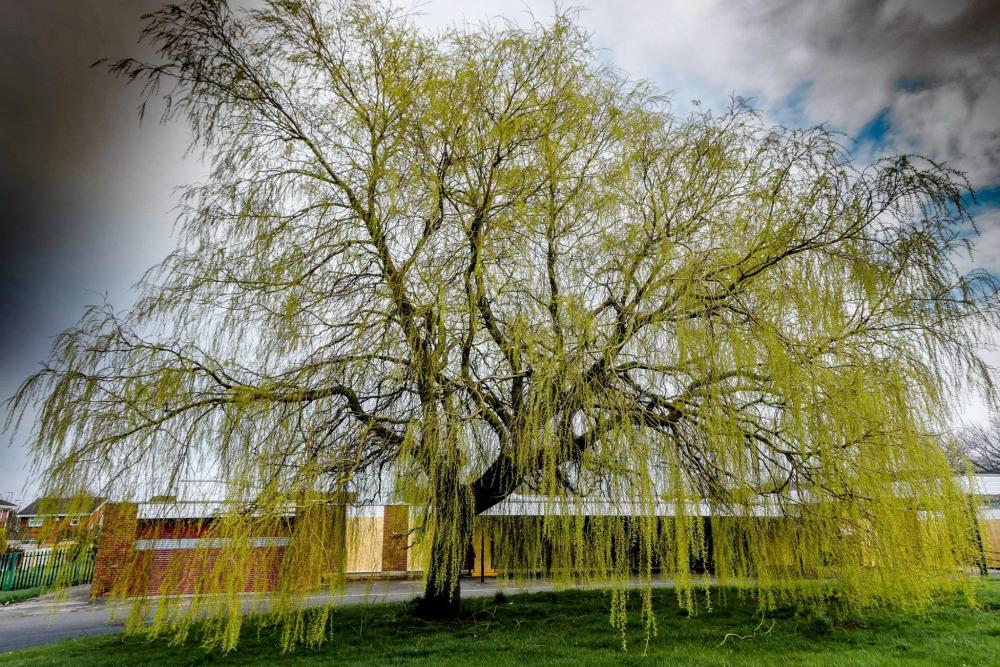


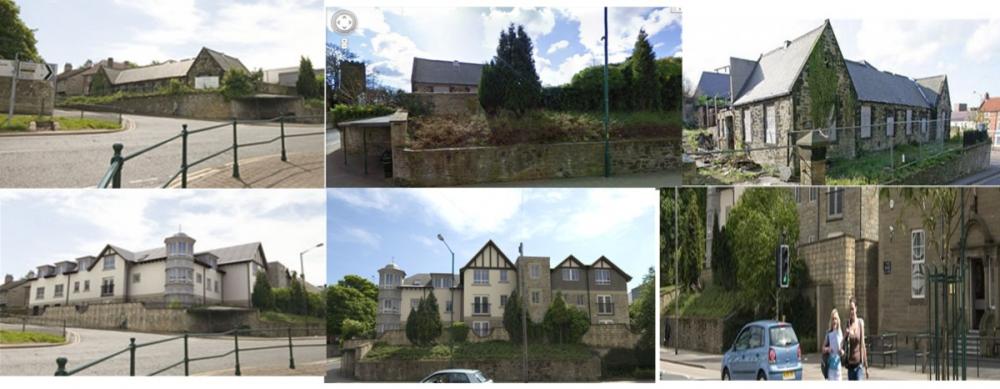
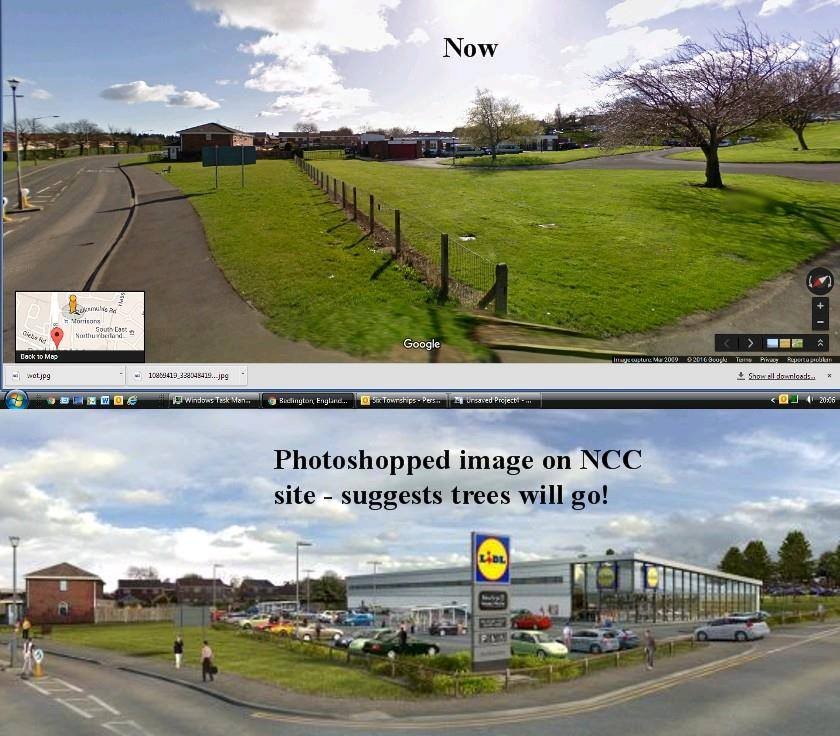
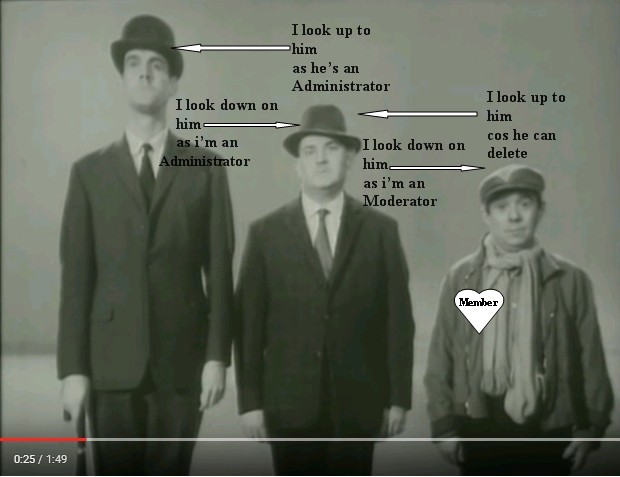
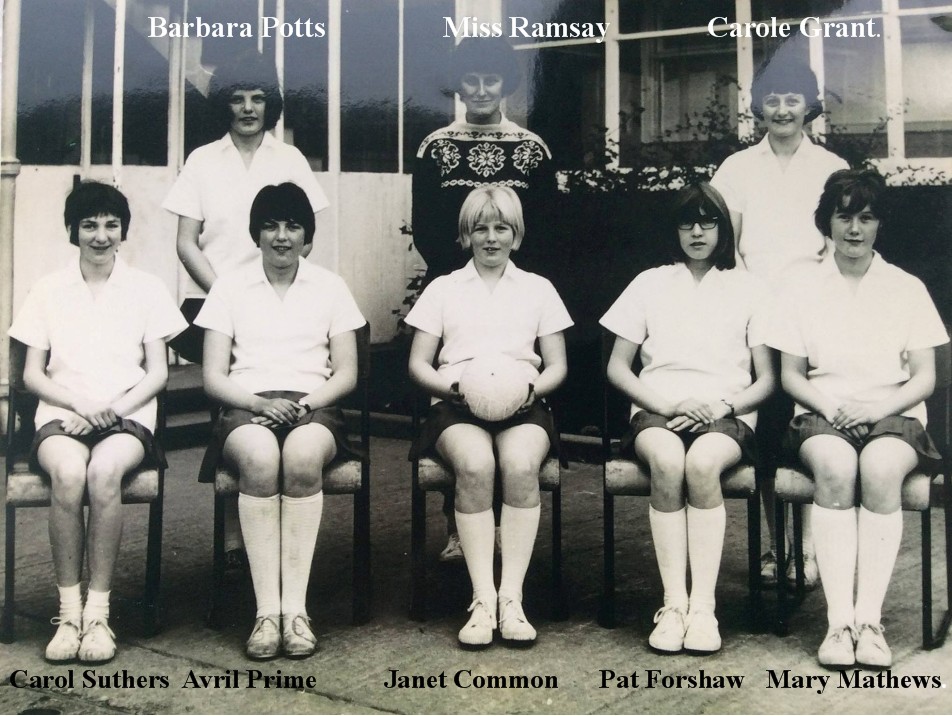
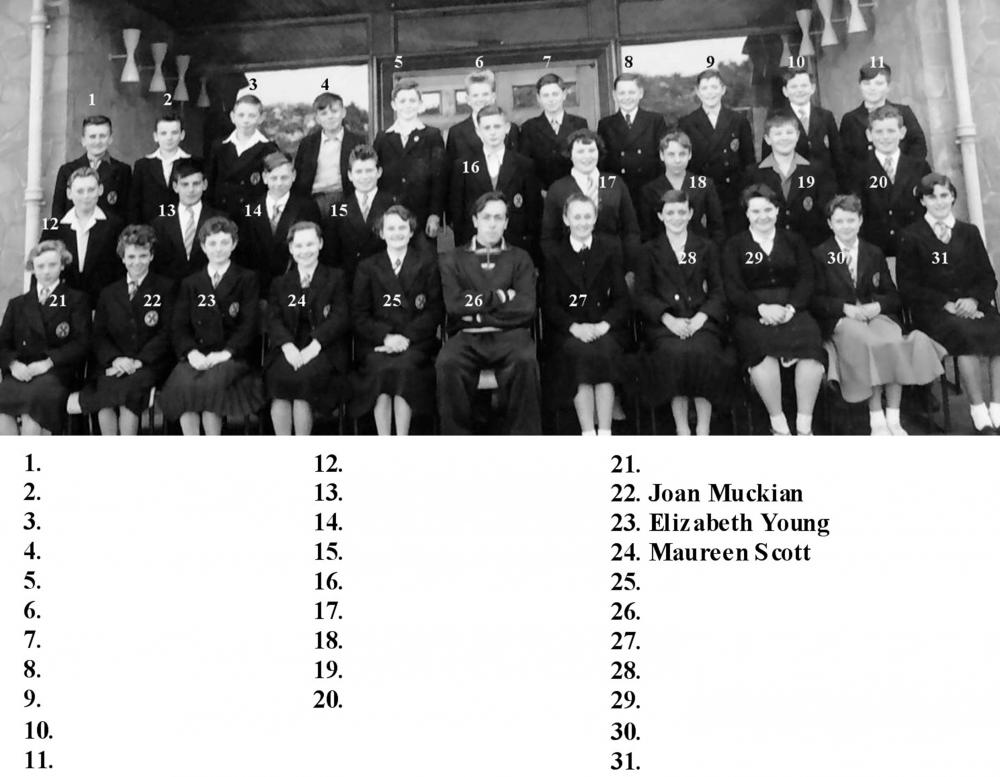
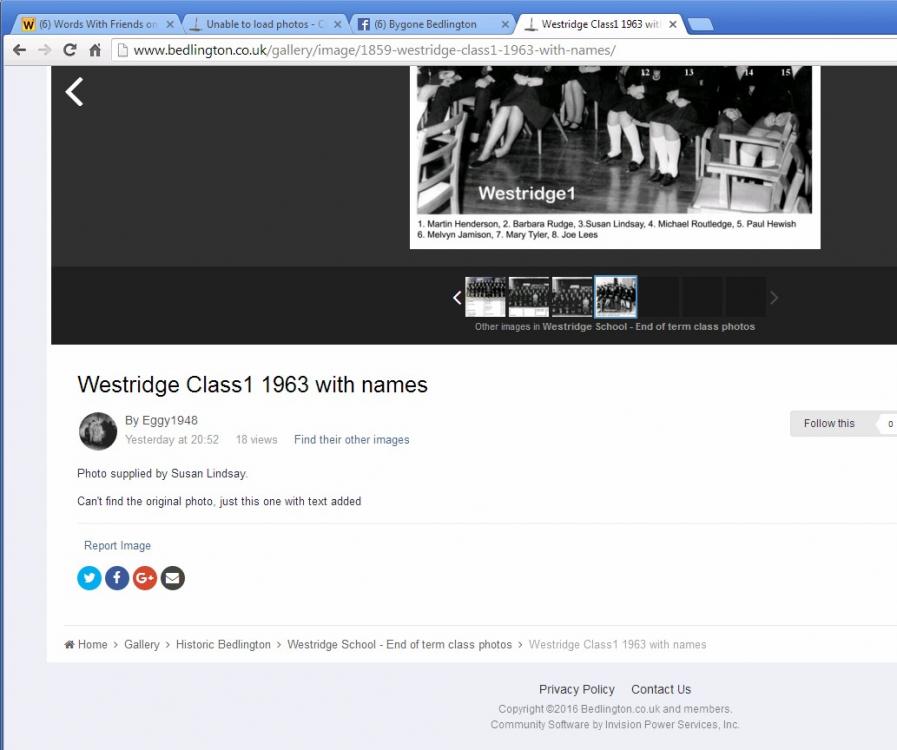
Bedlington Grammar School to be demolished
in History Hollow
Posted
Facebook post by David Williams.
Ex-BGS students: I have just received this from Mansel Dinnis, webmaster of the "Semper Sursum" website.
I look forward to seeing some of you there:
Hi
Bedlingtonshire Community High School have now confirmed they are giving former pupils the opportunity to visit the school at two ‘looking back, moving forward’ events in June before the old grammar school building is demolished.
For those former pupils who left the school before 2000 (ie: all Bedlington Grammar School pupils), the visit will take place at 7:00 pm on Thursday 16 June.
The school are still finalising the programme for the visit.
Admission is by ticket only. Tickets can be collected from Reception at the school. Please contact the school direct to order tickets. Here are the BCHS contact details.
Bedlingtonshire Community High School
Palace Road
Bedlington
Northumberland
NE22 7DS
Tel: 01670 822625 (choose option ‘0’ for Reception)
Email: info@bchs.uk.net
For those ex-pupils who do not live locally, tickets can be posted.
I have email addresses for only a limited number of former grammar school pupils and I would ask you to pass on this information to anyone you think might be interested.